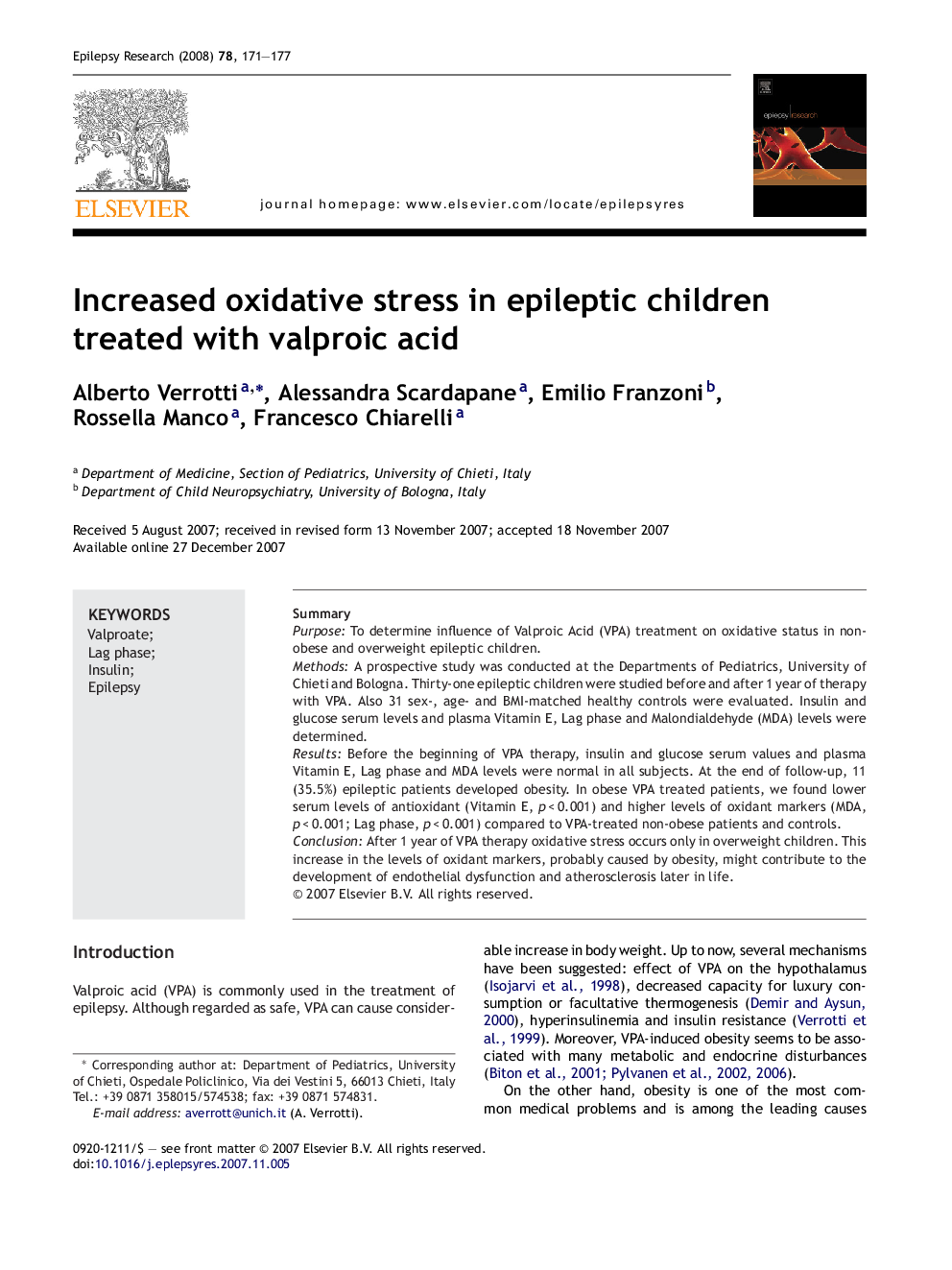| Article ID | Journal | Published Year | Pages | File Type |
|---|---|---|---|---|
| 3052995 | Epilepsy Research | 2008 | 7 Pages |
SummaryPurposeTo determine influence of Valproic Acid (VPA) treatment on oxidative status in non-obese and overweight epileptic children.MethodsA prospective study was conducted at the Departments of Pediatrics, University of Chieti and Bologna. Thirty-one epileptic children were studied before and after 1 year of therapy with VPA. Also 31 sex-, age- and BMI-matched healthy controls were evaluated. Insulin and glucose serum levels and plasma Vitamin E, Lag phase and Malondialdehyde (MDA) levels were determined.ResultsBefore the beginning of VPA therapy, insulin and glucose serum values and plasma Vitamin E, Lag phase and MDA levels were normal in all subjects. At the end of follow-up, 11 (35.5%) epileptic patients developed obesity. In obese VPA treated patients, we found lower serum levels of antioxidant (Vitamin E, p < 0.001) and higher levels of oxidant markers (MDA, p < 0.001; Lag phase, p < 0.001) compared to VPA-treated non-obese patients and controls.ConclusionAfter 1 year of VPA therapy oxidative stress occurs only in overweight children. This increase in the levels of oxidant markers, probably caused by obesity, might contribute to the development of endothelial dysfunction and atherosclerosis later in life.
